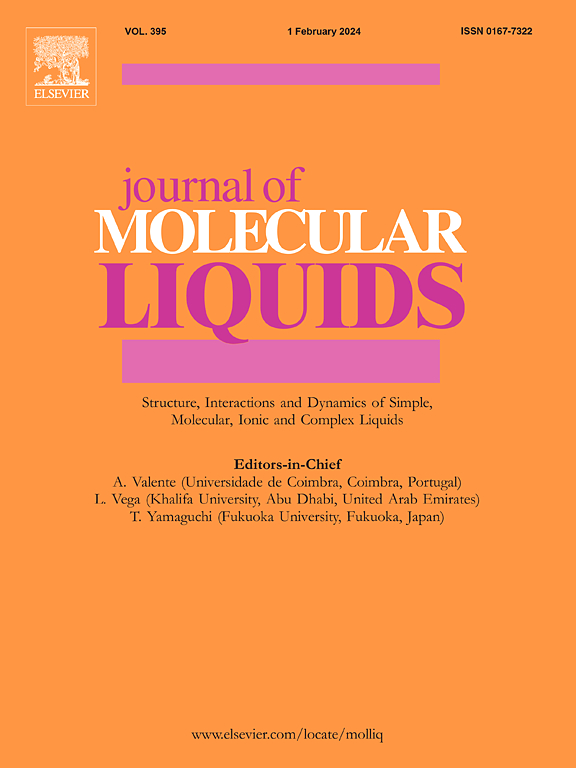Investigation of the effect of salts on dye wastewater separation performance in TpPa-1 membrane via molecular dynamics simulation
IF 5.3
2区 化学
Q2 CHEMISTRY, PHYSICAL
引用次数: 0
Abstract
The rapid progress in science and technology increases the demand for dyes and results in the pollution of dye wastewater. Recently, covalent organic frameworks (COFs) have been suggested as a promising candidate for wastewater treatment. The influence of inorganic salt ions on the transport and separation processes of dye wastewater is poorly understood. In this work, the transport and separation mechanisms of dyes are investigated via nonequilibrium molecular dynamics simulations (NEMD). It is found that the inorganic salts enhance the rejection rate of different dyes in TpPa-1 membranes. The fundamental reason for this phenomenon is the hindrance caused by inorganic salt ions, which change the orientation of dye molecules as they pass through the pore channels of the TpPa-1 membrane. As a result, the dye molecules show a greater tendency to form π–π interaction with the TpPa-1 membrane surface, which accelerates their adsorption.

通过分子动力学模拟研究盐分对 TpPa-1 膜中染料废水分离性能的影响
科学技术的飞速发展增加了对染料的需求,同时也造成了染料废水的污染。最近,共价有机框架(COFs)被认为是一种很有前途的废水处理候选材料。人们对无机盐离子对染料废水的迁移和分离过程的影响知之甚少。本研究通过非平衡分子动力学模拟(NEMD)研究了染料的迁移和分离机理。研究发现,无机盐提高了 TpPa-1 膜对不同染料的排斥率。造成这种现象的根本原因是无机盐离子造成的阻碍,它们改变了染料分子通过 TpPa-1 膜孔道时的取向。因此,染料分子更倾向于与 TpPa-1 膜表面形成 π-π 相互作用,从而加速其吸附。
本文章由计算机程序翻译,如有差异,请以英文原文为准。
求助全文
约1分钟内获得全文
求助全文
来源期刊

Journal of Molecular Liquids
化学-物理:原子、分子和化学物理
CiteScore
10.30
自引率
16.70%
发文量
2597
审稿时长
78 days
期刊介绍:
The journal includes papers in the following areas:
– Simple organic liquids and mixtures
– Ionic liquids
– Surfactant solutions (including micelles and vesicles) and liquid interfaces
– Colloidal solutions and nanoparticles
– Thermotropic and lyotropic liquid crystals
– Ferrofluids
– Water, aqueous solutions and other hydrogen-bonded liquids
– Lubricants, polymer solutions and melts
– Molten metals and salts
– Phase transitions and critical phenomena in liquids and confined fluids
– Self assembly in complex liquids.– Biomolecules in solution
The emphasis is on the molecular (or microscopic) understanding of particular liquids or liquid systems, especially concerning structure, dynamics and intermolecular forces. The experimental techniques used may include:
– Conventional spectroscopy (mid-IR and far-IR, Raman, NMR, etc.)
– Non-linear optics and time resolved spectroscopy (psec, fsec, asec, ISRS, etc.)
– Light scattering (Rayleigh, Brillouin, PCS, etc.)
– Dielectric relaxation
– X-ray and neutron scattering and diffraction.
Experimental studies, computer simulations (MD or MC) and analytical theory will be considered for publication; papers just reporting experimental results that do not contribute to the understanding of the fundamentals of molecular and ionic liquids will not be accepted. Only papers of a non-routine nature and advancing the field will be considered for publication.
 求助内容:
求助内容: 应助结果提醒方式:
应助结果提醒方式:


